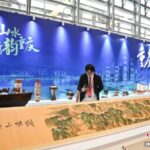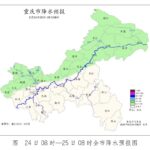The Chongqing municipal government held a press conference on the achievements in scientific and technological innovation during the “14th Five-Year Plan” period. The head of the Municipal Science and Technology Bureau stated that during this period, the city vigorously implemented a primary strategy of scientific and technological innovation and talent development, focusing on building a “416” scientific and technological innovation layout. Seven key indicators, including R&D expenditure intensity and the number of invention patents per 10,000 people, doubled. The construction of a nationally influential scientific and technological innovation center reached a new level, with scientific and technological innovation becoming the “strongest engine” driving high-quality development.
Number of Innovation Base Platforms at Municipal Level and Above Reaches 1,297
Over the past five years, the city has continuously improved its innovation system, achieving a new leap in scientific and technological innovation capabilities.
The Chengdu-Chongqing regional scientific and technological innovation center was included among the three national regional scientific and technological innovation centers. The Western (Chongqing) Science City and Liangjiang New Area accelerated their development, becoming important forces leading and driving innovation in the western region. Significant progress was made in building four major scientific and technological innovation hubs: digital intelligence technology, life health, new materials, and green low-carbon. During the “14th Five-Year Plan” period, the city’s total R&D investment exceeded 80 billion yuan, and its comprehensive scientific and technological innovation level index remained the highest in the western region.
Meanwhile, the city accelerated the construction of a municipal scientific and technological innovation platform system led by Chongqing laboratories, centered on national-level base platforms, supported by municipal scientific and technological innovation platforms, and supplemented by new research and development institutions. Construction began on three Chongqing laboratories: Jinfeng, Jialing River, and Moon Lake. A number of new innovation platforms in emerging fields were cultivated, including the General Artificial Intelligence Research Institute and the Information and Smart Medicine Research Institute. The number of innovation base platforms at the municipal level and above reached 1,297, doubling compared to the end of the “13th Five-Year Plan” period.
City’s Technology Contract Transaction Volume Reached 97.424 Billion Yuan Last Year
Over the past five years, the city has continuously strengthened the coordination of “four aspects” and the integration of “four chains,” achieving new breakthroughs in cultivating new productive forces.
The control over key industrial chains has been continuously enhanced. Over 600 major key research projects targeted and resolved 304 bottlenecks in industrial chains. The nanoscale time-grating device pioneered the “time measuring space” technical approach, with core performance indicators reaching the highest international level currently announced, providing a “precision scale” for high-end equipment such as industrial machine tools and precision testing instruments.
The role of enterprises as the main body of innovation has become more prominent. The “double doubling” action plan for high-tech enterprises and technology-based enterprises was implemented, cumulatively cultivating 9,123 high-tech enterprises and 75,600 technology-based enterprises, 2.1 times and 2.8 times the numbers in 2020, respectively.
The efficiency of technology transfer and transformation has significantly improved. The city accelerated the construction of the national science and technology achievement transfer and transformation demonstration zone, turning “paper achievements” into “market products.” A series of reforms on job-related scientific and technological achievements were deepened, enabling researchers to “dare to innovate and benefit from it.” The Moon Lake Science and Technology Park model of “education + talent + innovation + industry” was established, turning young people’s entrepreneurial “golden ideas” into “good business.” Last year, the city’s technology contract transaction volume reached 97.424 billion yuan, a five-fold increase compared to 2020, with more technologies benefiting the public rapidly entering daily life.
Three “70%” Measures Ensure Innovation Resources Precisely Align with Industry
During the “14th Five-Year Plan” period, the city continued to advance reforms in the science and technology system, fostering new vitality in innovation and creation.
The “Chongqing Science and Technology Innovation Promotion Regulations” were revised and implemented, and multiple policy documents on major scientific and technological research, innovation talent introduction and cultivation, and innovation environment were issued, making the science and technology innovation policy and regulatory system more comprehensive.
Major (key) science and technology projects were organized and implemented. Currently, 70% of technical needs are proposed by enterprises, 70% of projects are led or participated in by enterprises, and 70% of fiscal funds are directed to enterprises, ensuring that innovation resources precisely align with industrial development needs and making organized scientific and technological innovation more efficient.
Twenty-four science and technology incentive measures were introduced, and a series of “


